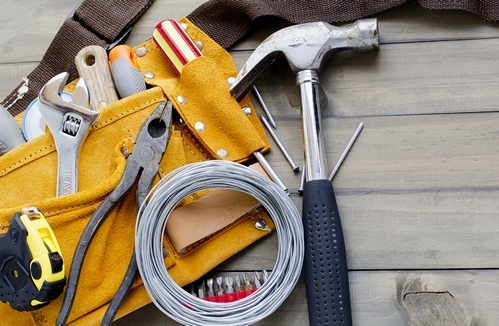In 2014, L’Oreal made a bold move in the ever-youthful beauty industry. The cosmetics company launched a splashy new line of anti-aging products and hired Diane Keaton, then 68, as the spokeswoman. L’Oreal realized that older women were an underserved market with money to spend.
More companies are starting to realize that being age friendly isn’t just good business, it’s also good for business. Seniors are redefining the aging process

and are forcing companies to rethink aging from both a customer and workforce perspective, according to “Turning Silver into Gold: The Business of Aging,” a report produced by the Milken Institute as part of the 2017 Summit on Business and the Future of Aging.
Seen by some as the world’s most compelling business opportunity, the 60-plus population will double to more than 2 billion by 2050. Seniors bring highly desired disposable income and growing needs as customers while offering experience, wisdom and institutional knowledge as employees. The fastest-growing demographic is unrivaled both by what it has—and has to offer. Now, it’s up to companies to realize the lucrative opportunity at their doorstep.
But to capture these emerging markets, businesses need to imagine a new future of aging. “How can we rewire, not retire? Reboot not retread? Turn recreation in to re-creation? The business sector can play a key role—and provide important leadership—in all of these areas,” notes Peter Mullin, chair of the M Center of Excellence, quoted in the report.
Businesses need to understand how today’s seniors differ from previous generations, and their willingness to learn can impact the bottom line. Older adults are a human capital resource pool that can contribute as entrepreneurs, employees, mentors and leaders. They can also train the next generation of workers, thereby helping to avoid a brain drain that would be detrimental to the economy.
The business community must embrace the undervalued and underutilized talents of older workers to realize “opportunities too compelling to ignore,” the report warns.
Spending power
Consider this: baby boomers account for half of all consumer packaged-goods dollars, but marketing tends to stop courting customers at the “cutoff” age of 49. “(But) older adults are “the most marketing friendly generation in U.S. history,” notes market research company Nielsen, quoted in the report. “They are healthy and growing, not broken and dying.”
Campaigns that target boomers are twice as likely to be successful as those targeting millennials, according to University of Michigan researchers. While younger generations are merely liking and sharing on social media, boomers are buying.
Other highlights from the Milken Institute report show the global power of the silver wallet:
- Bank of America Merrill Lynch analysts project that by 2020, annual consumer spending by adults age 60+ globally will reach $15 trillion.
- Americans age 50 and up account for $7.6 trillion in direct spending and related economic activity, a figure surpassing the gross domestic product of every nation except the United States and China. However, fewer than half of companies are taking global aging into account in their strategic planning.
- In developed countries, the 60 and older demographic is projected to generate half of all urban consumption growth between 2015 and 2030, significantly fueled by health care spending, according to the McKinsey Global Institute.
- In the United States, adults age 60 and older control 70 percent of disposable income.
Redefining retirement
Older adults want to continue living productive and meaningful lives. A growing number of workers are working well into retirement years and redefining retirement expectations.
Current trends suggest it will become increasingly unusual for retirees to leave the workforce altogether. That’s a boon to companies facing a brain drain as their most experienced and knowledgeable workers retire. And, recent research bolsters the argument for older workers by disproving the stereotype that productivity declines with age.
Older adults who remain working beyond age 55 are having significant and wide-ranging impacts on the U.S. workforce already, the Milken Institute report emphasizes:
- Workers age 55 and older have driven nearly all the labor force growth in recent years, growing from the smallest to largest segment of U.S. labor.
- By 2024, nearly 25 percent of American workers will be age 55+, up from just 12 percent in 1994.
- Almost 9 million Americans age 65 or older are working, nearly twice the number of teens who work.
- Even so, the overall U.S. labor force has declined in recent years, according to the Bureau of Labor Statistics. “Without proper foresight and preparation, these two challenges will combine to create an unprecedented and potentially crippling talent crisis in the coming decade,” notes the Baxter Consulting Group, publisher of the 2017 “Managing the New Multi-Generational Workforce.”
The times are changing, and businesses have to change right along with them, the report urges. Embrace the promise and possibilities of an older workforce and develop policies and practices that reflect changing demographics for both customers and employees. Changes today will positively influence profits and position companies for a more diverse and prosperous longevity economy.
As Michael Hodin, CEO of the Global Coalition on Aging, notes in the report, “We know that over half of workers report they want to work longer and differently, which tells us the megatrend of the aging of society is beginning to have huge impact on 21st century life. The question remains: are institutions of society, including employers, ready to deal with these transformative changes?”
If you want a focused approach to staying relevant in the longevity economy, facilitated by experts in the senior living field, contact Quantum Age today.
